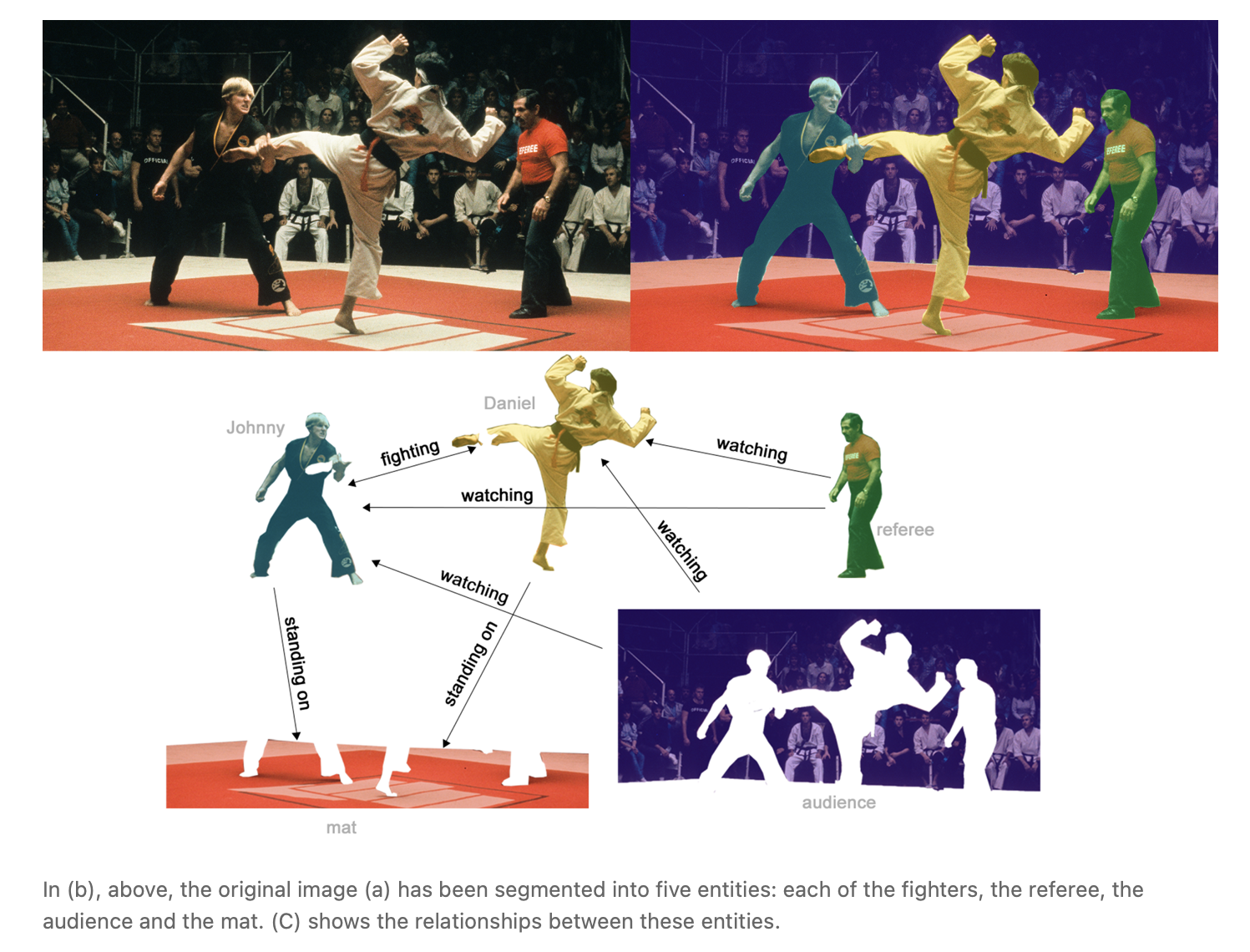【论文阅读】A Gentle Introduction to Graph Neural Networks [图神经网络入门](3)
What types of problems have graph structured data?
什么样的问题需要图类型的数据?
We have described some examples of graphs in the wild, but what tasks do we want to perform on this data? There are three general types of prediction tasks on graphs: graph-level, node-level, and edge-level.
我们已经描述了一些图的示例,但是我们希望对这些数据执行什么任务呢?在图上一般有三种类型的预测任务: 图层面、节点层面和边层面的任务。
In a graph-level task, we predict a single property for a whole graph. For a node-level task, we predict some property for each node in a graph. For an edge-level task, we want to predict the property or presence of edges in a graph.
在图层面的任务中,我们预测整个图的单个属性。对于节点层面的任务,我们预测图中每个节点的一些属性。对于边层面的任务,我们希望预测图中边的属性或是否存在。
For the three levels of prediction problems described above (graph-level, node-level, and edge-level), we will show that all of the following problems can be solved with a single model class, the GNN. But first, let’s take a tour through the three classes of graph prediction problems in more detail, and provide concrete examples of each.
对于上面描述的三个层面的预测问题(图层面、节点层面和边层面),我们将说明以下所有问题都可以通过一个模型来解决,就是GNN。但首先,让我们更详细地了解一下这三类图预测问题,并列举每种问题的具体示例。
There are other related tasks that are areas of active research. For instance, we might want to generate graphs, or explain predictions on a graph. More topics can be found in the Into the weeds section .
还有其他相关的任务是较为活跃的研究领域。例如,我们可能想要生成图,或者对图上的预测进行解释。更多的主题可以在进入weeds部分找到。
Graph-level task
图层面的任务
In a graph-level task, our goal is to predict the property of an entire graph. For example, for a molecule represented as a graph, we might want to predict what the molecule smells like, or whether it will bind to a receptor implicated in a disease.
在图层面的任务中,我们的目标是预测整个图的属性。例如,对于一个用图表示的分子,我们可能想要预测这个分子的气味,或者它是否会与一种与疾病有关的受体结合。

输出: 每个图的标签,(例如,“图包含两个环吗?”)
This is analogous to image classification problems with MNIST and CIFAR, where we want to associate a label to an entire image. With text, a similar problem is sentiment analysis where we want to identify the mood or emotion of an entire sentence at once.
这类似于MNIST和CIFAR的图像分类问题,在这些问题中,我们希望将一个标签关联到整个图像。对于文本,一个类似的问题是情绪分析,我们想要一次性确定整个句子的心境或情绪。
Node-level task
节点层面的任务
Node-level tasks are concerned with predicting the identity or role of each node within a graph.
节点层面的任务与预测图中每个节点的标识或角色有关。
A classic example of a node-level prediction problem is Zach’s karate club [15] . The dataset is a single social network graph made up of individuals that have sworn allegiance to one of two karate clubs after a political rift. As the story goes, a feud between Mr. Hi (Instructor) and John H (Administrator) creates a schism in the karate club. The nodes represent individual karate practitioners, and the edges represent interactions between these members outside of karate. The prediction problem is to classify whether a given member becomes loyal to either Mr. Hi or John H, after the feud. In this case, distance between a node to either the Instructor or Administrator is highly correlated to this label.
关于节点级别预测问题的一个经典例子便是Zach的空手道俱乐部[15]。该数据集是一个单一的社交网络图,由出现分歧后选择效忠于两个空手道俱乐部之一的个人组成。随着故事的发展,Mr. Hi(教练)和John H(管理员)之间的分歧在空手道俱乐部造成了分裂。节点代表每个空手道练习者,边缘代表空手道之外这些成员之间的互动。预测的问题是区分一个给定的成员在出现分歧之后是忠于Mr. Hi还是John H。在这种情况下,节点到教练或管理员之间的距离与此标签高度相关。

输出: 图节点的标签
On the left we have the initial conditions of the problem, on the right we have a possible solution, where each node has been classified based on the alliance. The dataset can be used in other graph problems like unsupervised learning.
左边是该问题的初始条件,右边是可能的解决方案,每个节点都根据联盟进行了分类。该数据集可以用于其他图问题,如无监督学习。
Following the image analogy, node-level prediction problems are analogous to image segmentation, where we are trying to label the role of each pixel in an image. With text, a similar task would be predicting the parts-of-speech of each word in a sentence (e.g. noun, verb, adverb, etc).
与图像层面类比,节点层面的预测问题类似于图像分割,我们试图标记图像中每个像素的角色。在文本中,类似的任务是预测句子中每个单词的词性(例如名词、动词、副词等)。
Edge-level task
边层面的任务
The remaining prediction problem in graphs is edge prediction.
图的其他类型的预测问题是边层面的预测。
One example of edge-level inference is in image scene understanding. Beyond identifying objects in an image, deep learning models can be used to predict the relationship between them. We can phrase this as an edge-level classification: given nodes that represent the objects in the image, we wish to predict which of these nodes share an edge or what the value of that edge is. If we wish to discover connections between entities, we could consider the graph fully connected and based on their predicted value prune edges to arrive at a sparse graph.
边层面预测的一个例子是图像场景理解。除了识别图像中的物体,深度学习模型还可以用来预测它们之间的关系。我们可以将其描述为边层面分类: 给定代表图像中对象的节点,我们希望预测这些节点中哪些节点共享一条边,或者那条边的值是多少。如果我们想要发现实体之间的连接,我们可以认为图是完全连通的,并根据它们的预测值剪枝边来得到一个稀疏图。


输出: 每条边的标签
在左边,我们有一个根据上面图像的场景构建的初始图。右边是根据模型的输出对某些连接进行剪枝时,该图可能的边的标签。
参考文献
[15] An Information Flow Model for Conflict and Fission in Small Groups Zachary, W.W., 1977. J. Anthropol. Res., Vol 33(4), pp. 452--473. The University of Chicago Press.